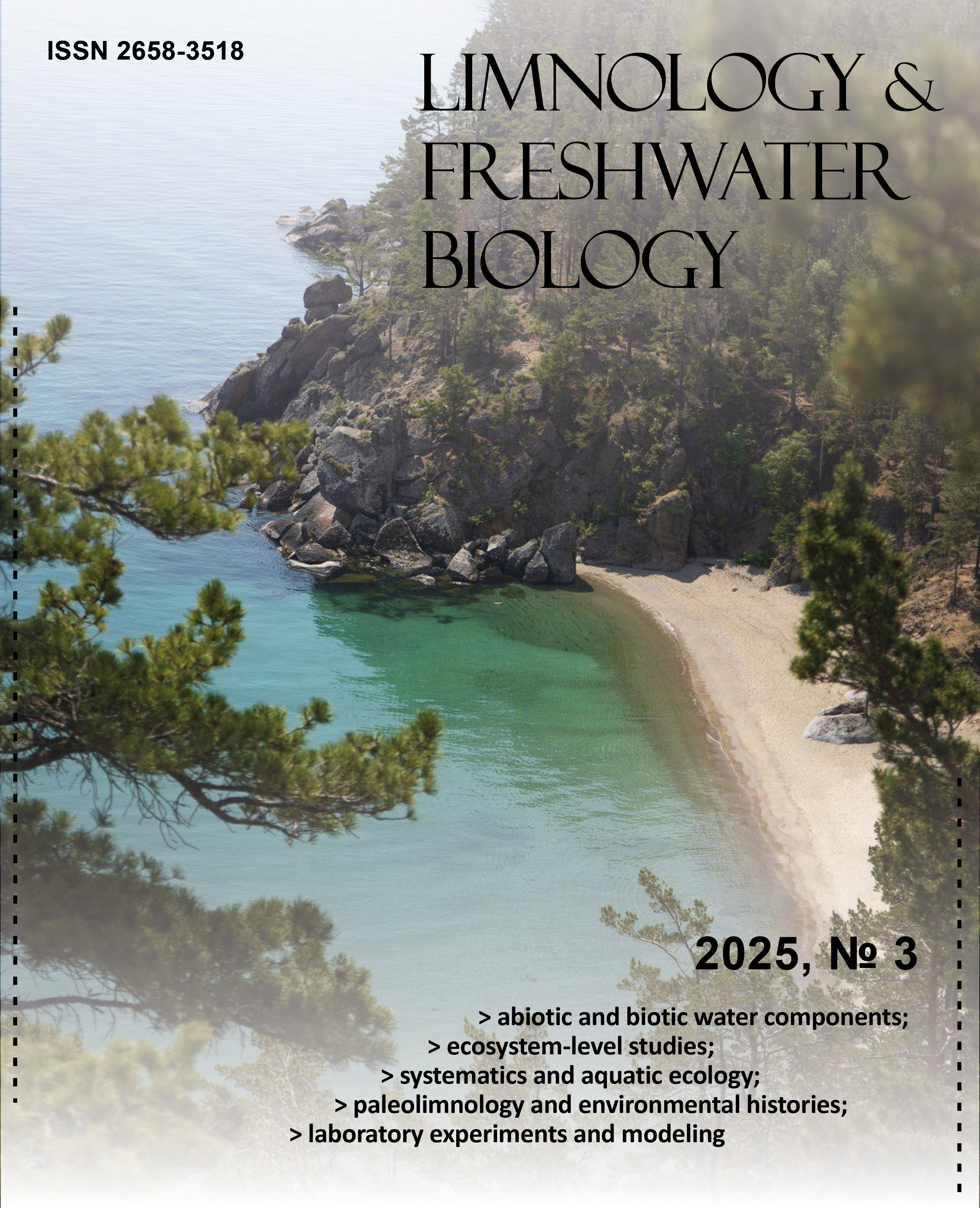Eukaryotic communities of freshwater bryozoans (Phylactolaemata: Plumatellidae) of the Baikal region
DOI:
https://doi.org/10.31951/2658-3518-2025-A-3-268Keywords:
DNA metabarcoding, 18S рРНК, ITS1–5.8S–ITS2, COI, 16S rRNAAbstract
The diversity of eukaryotic communities associated with bryozoans was investigated using DNA metabarcoding based on the 18S rRNA gene. The results obtained indicate that each bryozoan species, coexisting in close proximity to one another, harbors a distinctive community of associated eukaryotes, the composition of which likely depends on the form of the colonies. The community associated with the “bushy” colony of Plumatella sp. was found to be more diverse and differed in species composition from the community formed on the “creeping” colony of P. repens. In the “bushy” bryozoans, diatoms (60%) and ciliates (22%) predominated, along with golden algae (4%), hydras (3%), chytridiomycetes (1.6%), and rotifers (1%). In contrast, unicellular algae (32%), dinoflagellates (27%), apicomplexans (10.6%), and other groups of protists (amoebas, euglenoids, and others) (4.6%) were more frequently associated with the “creeping” bryozoan. Among invertebrates, annelid worms (12.5%), tapeworms (4%), and mollusks (3%) predominated. Notably, the study revealed the presence of protostome animals belonging to the phylum Entoprocta, marking the first documentation of this taxon in the water bodies of the Baikal region.
Downloads
Published
Issue
Section
License
Copyright (c) 2025 Limnology and Freshwater Biology

This work is licensed under a Creative Commons Attribution-NonCommercial 4.0 International License.

This work is distributed under the Creative Commons Attribution-NonCommercial 4.0 International License.







